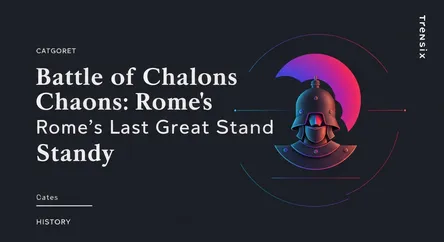History
Battle of Chalons: Rome's Last Great Stand

A look at the epic 451 AD clash where a Roman-led coalition halted Attila the Hun's invasion of Gaul, a pivotal moment in European history.
What is it?
The Battle of Chalons, also known as the Battle of the Catalaunian Plains, was a monumental conflict fought on June 20, 451 AD, in what is now northeastern France. It pitted a coalition army led by the Roman general Flavius Aetius and the Visigothic King Theodoric I against the invading forces of Attila the Hun. Attila's army was a formidable host of Huns and various allied Germanic tribes, including the Ostrogoths. This battle is widely considered one of the last major military operations of the Western Roman Empire and was marked by incredibly high casualties on both sides.
Why is it trending?
The Battle of Chalons remains a topic of historical fascination because it is often viewed as a crucial turning point that saved Western Europe from Hunnic domination. Had Attila been victorious, the course of Western civilization might have been drastically altered. The battle was a rare instance of traditional enemies, Romans and Visigoths, uniting against a common threat. This epic confrontation between two of late antiquity's most formidable military leaders, Aetius and Attila, halted the Hun's advance and shattered his aura of invincibility.
How does it affect people?
The outcome of the Battle of Chalons had a profound, albeit complex, impact. By stopping Attila's invasion of Gaul, the Roman-Visigothic coalition preserved the developing Gallo-Roman culture and the nascent Germanic kingdoms. The victory bought critical time for Europe, as Attila's power was checked, and his empire crumbled shortly after his death a few years later. However, the victory came at a great cost. The immense losses, including the death of King Theodoric on the battlefield, severely weakened both the Roman and Visigothic military capabilities, arguably hastening the eventual collapse of the Western Roman Empire just 25 years later.